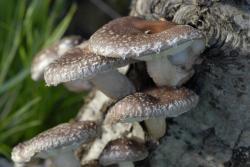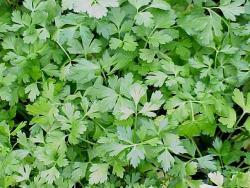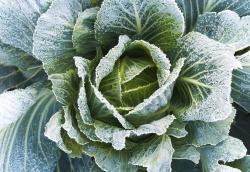We in the mild climates have too much of a good thing: sunlight. Yet it is so easy to forget about our gardens while we fret about the holidays. It’s the possibility of that fretting and stress that makes cool-season gardening so appealing to me. Autumn and winter have short days and cool, long nights in the Northern Hemisphere. The upper level of a garden, from the ground up, can look barren and unpromising as the summer vegetables wither, but that’s not the case underground. By planting time-honored, cool-season, short-day crops for autumn to spring, we can utilize the soil while energizing it by planting plants that help grow the soil.
Plants like Celery and Parsley absorb excess alkalinity. Peas, snow or pod, bush-size or tall vines, love the cool weather and long nights. Any sort of allium, such as chives, or even the edible ornamental Society Garlic, can really help soil create a healthy pH balance and deter insects. Brassicas, such as broccoli, cabbage, and kale, do very well in almost freezing temperatures after they’ve matured. In fact, they taste better when they’ve been exposed to frost.
Nasturtiums and Calendulas are both edible flowers that practically grow themselves in the cool days. Greens like Mache, Arugula and Cilantro are going to thank you for growing them now, and your lettuce will stay compact and rotund rather than bolting. Radishes will delight you with their rapid development, usually just three to four weeks. And if you haven’t grown Turnips, try. They’re a lot like Radish, only taking a bit longer.
Beets, oh heavenly beets! They love a good season in the ground, given the task to take the minerals from salt to sweet. How do they do that? Chioggia beets are nicknamed Candy Beets because of their pink and violet rings and when baked, ooze a rich natural caramel. And, please, use the beet greens when cooking! They’re loaded with minerals that you just can’t get any other way.
Another thing you can do is Grow Your Soil! There are many ways to do it: Some people plant a cover crop with cool-season clover and oats and then simply turn the plants under to decompose. Other options are to let your soil go fallow, but mulch it a good foot deep to suppress weeds. Some people sheet mulch, which is simply laying flattened cardboard on the soil before mulching it. Water will help keep it down.
My favorite option is this: Grow Mushrooms! Paul Stamets of Fungi Perfect is a well-respected mycologist and TED speaker who has perfected the food that Mother Earth prefers above all: a soil web of mushrooms that extends for miles under the surface, feeding our soil and therefore our plants that live off the soil. You can inoculate your soil with many types of gourmet “spawn,” as it is called, to grow your own mushrooms. Mushrooms have medicinal value and are easy to grow. Unfortunately, Chanterelle mushrooms are elusive and must still be wild harvested, but if you like them and want to hunt for them, watch out for poison oak, because that's where they like to grow, too. And mushroom kits make great gifts!




| Thread Title | Last Reply | Replies |
|---|---|---|
| Thank you by kosk0025 | Mar 26, 2016 10:19 AM | 1 |
| What about spinach and swiss chard as well ! by hampartsum | Oct 22, 2015 8:01 PM | 2 |